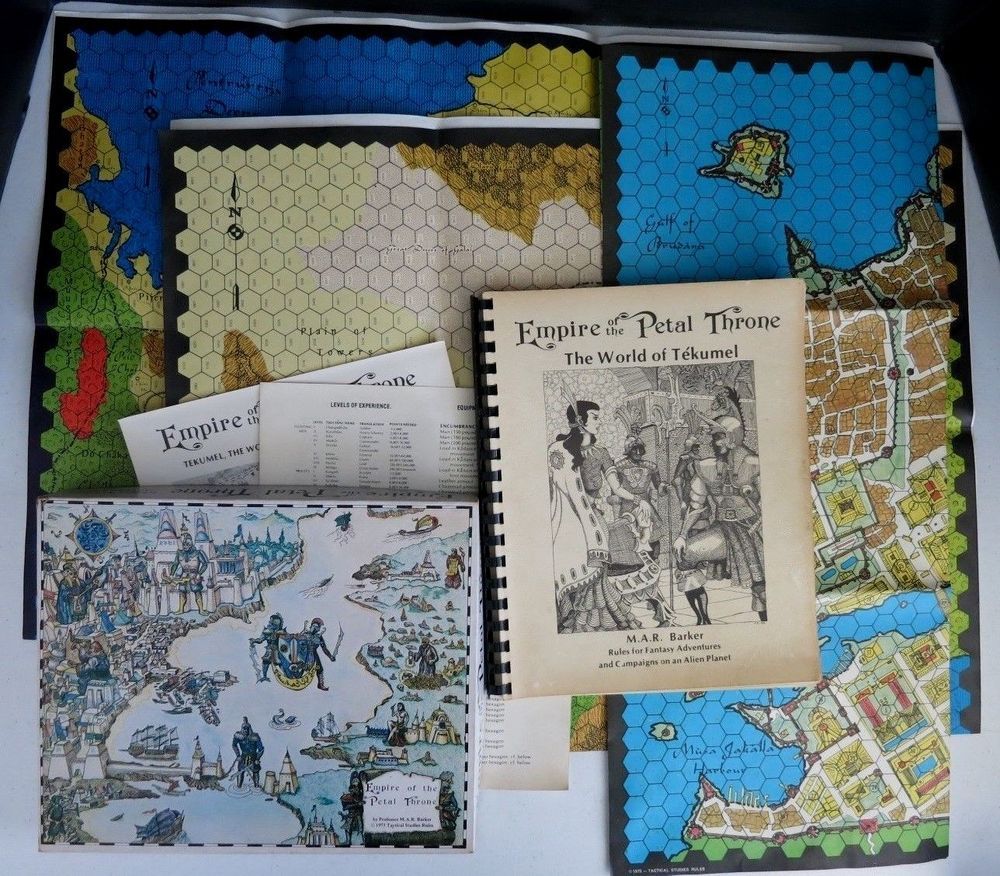

In fact, in terms of clarity of explanation and overall organisation it’s much better than OD&D itself and conveys the assumed model of a Tekumel campaign nicely. My copy is a single-booklet release that was put out by Different Worlds magazine.Įmerging only a year after Dungeons & Dragons itself, it is no surprise that the system here is based heavily on OD&D – stats are rolled on percentiles instead of 3D6, which was a variant a lot of early TSR RPGs indulged in, but otherwise its basic principles are a reasonable interpretation of the white box set.
#TEKUMEL EMPIRE OF THE PETAL THRONE PDF#
The first and probably most famous of the Tekumel RPGs was put out by TSR as a boxed set in 1975 that original is now a collector’s item, but fortunately various reprints from over the years and an official Barker estate-endorsed PDF release mean that there’s no need to pay collectors’ market prices if you just want to read it. For my money, you can get a pretty good handle on Tekumel just with two sources – the original Empire of the Petal Throne for the broad brushstrokes and the Tekumel Source Book from Swords & Glory for the fine detail. That’s a wild concept that has various implications in play (many of the “monsters” and intelligent nonhumans of the game are various sorts of alien, for instance), but it needn’t be unapproachable. Cut off from the interstellar empires that sustained it, high-tech civilisation on Tekumel crashed, and what you have today is the strange thing that arose after humans and their allies rebuilt in the face of that disaster and the re-emergence of their various enemies – including the justifiably upset original owners of the planet. Disaster fell when for reasons unknown the Tekumel star system was snatched away into a pocket dimension in which it was the only matter in existence. The planet of Tekumel is, in fact, a terraformed world which was discovered 60.000 years after the present day and conquered by humanity, its old ecosystem cleared off, its former rulers isolated in reservations, and the planet repopulated by a mixture of human beings and various alien allies and client races of humanity (as well as alien foes of humanity infiltrating to do mischief). For one thing, it takes extensive inspiration from Mesoamerican and South Asian cultures for another, it’s not so much straight fantasy as a Vancian science fantasy setting.

This may come down to two factors: the setting material has a fearsome reputation for being extremely dense, and the setting itself is pretty distant from what Western fantasy audiences have come to expect. There’s a small but faithful fan community around the setting, but it’s never been a runaway commercial success. It was not long afterwards that the original Empire of the Petal Throne RPG emerged through TSR, and every so often someone else tries to do a Tekumel RPG. However, once Barker crossed paths with Mike Mornard, one of the early playtesters of Dungeons & Dragons, he became acquainted with the nascent RPG format and recognised in it a way to game in Tekumel which appealed to him greatly and was nicely compatible with some of the other gaming activities he’d applied to it.


(Though Greyhawk lent its name to the first D&D supplement, that was mostly a collection of rules and didn’t really include any setting information as we understand it.) It did not originate as one – like Greg Stafford’s Glorantha, it had been developed by its creator for quite some time before being used for gaming purposes, Barker having dreamed it up in his middle school years in the 1940s and been developing it in subsequent decades, though he did have some exposure at the time to the wargaming hobby and had been producing home-made Tekumel miniatures armies. The Tekumel setting, designed by Professor Muhammad Abd-al-Rahman Barker, has the distinction of being the oldest published roleplaying game world.


 0 kommentar(er)
0 kommentar(er)
